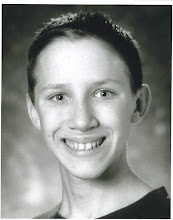Much of the orthodoxy and writing on cities suggests that cities should be read as organisms; millions of disparate, tiny parts working and interacting in various ways to grow, progress, and manuever, and evolve while hopefully avoiding death or distinction. While the city-as-organism model definitely has a handful of flaws (as outlined in our UPSE reading from new york), I think that it is a helpful way to approach the million dollar question about neighborhood sucession and gentrification.
Gentrification in the United States brings about a very particular sort of storyline. The script suggests that a poor, usually nonwhite innercity neighborhood attracts the attention of investors and Richard Florida, creative-class single white yuppies who like the "gritty feel" of the built environment and its proximity to some revived central business district. The renewed interest in these area is often promoted by municipal subsidies desperately clamoring for a tax base and eventually creates a price raise on rents and everyday goods,thus pushing out the original inhabitants of the neighborhood to flagging first ring suburbs or cheaper parts of the country.This plotline seems to fit a handful of situations nicely; detractors bemoan that it's happening in New York's Harlem, it's happening on Chicago's Upper South Side, it's happening to Portland's Alberta Street, it's happening in many American cities where factories, warehouses, and decrepted slums turn out to make great places for condos and Starbucks for childless hipsters and vegan advertising directors.
What's frustrating is that this story is simutanously horrifyingly true and painstakingly false at the same time. As we learned in our case study of "gentrifying" neighborhoods in Cape Town, various sections of the city are always undergoing change and succession and evolution. The whole "city-as-an-organism" thing wouldn't really work if the same neighborhood held the same people with the same backgrounds and same occupations; in fact, the most exciting and original urban spaces I have visited and studied are collected vestiges of dozens of different economic, political and social uses of the landscape, mixed into one gigantic cornocopia with new uses for old people, old buildings, and old street patterns. In short, I am trying to instill that the gradual shift of one neighborhood from occupying one set of characteristics to another over the course of history is inevitable, and hardly something that is a necessary evil.
So when does gentrification happen? If, in the case of the Bokaap, a neighborhood becomes more and more expensive, and residents choose to move out of the neighborhood to cash in on their newly valuable property, one could argue that residents were acting on their own free will, and that very level of agency means that the changes that happened in that neighborhood were not ones of gentrification but instead of one group of people leaving while another entered. This becomes even more intruiging when one considers that the residents who are most adverse to changes in the Bokaap are of a much older generation than those that are about to inherit valuable property and are socially more inclined to cash in on their property for a piece of property out in the northern suburbs. However, many of the changes in the Bokaap neighborhood were not brought about by the free agency of the neighborhood; the rise in tourism, while one of the largest reasons for their increase in housing value, has also craeted unfortunate circumstances, such as the fact that now many restaurants in the Bokaap serve alcohol. If the pattern of lifestyle in the Bokaap is severely disrupted (as in, families in the Bokaap no longer shop at their local stores because of religious custom against alcohol), couldn't this be an example of a neighborhood responding to external factors to make the original inhabitants less welcome in their original community? Is THAT gentrification?
4.5.09
Gentrification in Woodstock, Cape Town, South Africa
Subscribe to:
Post Comments (Atom)






No comments:
Post a Comment